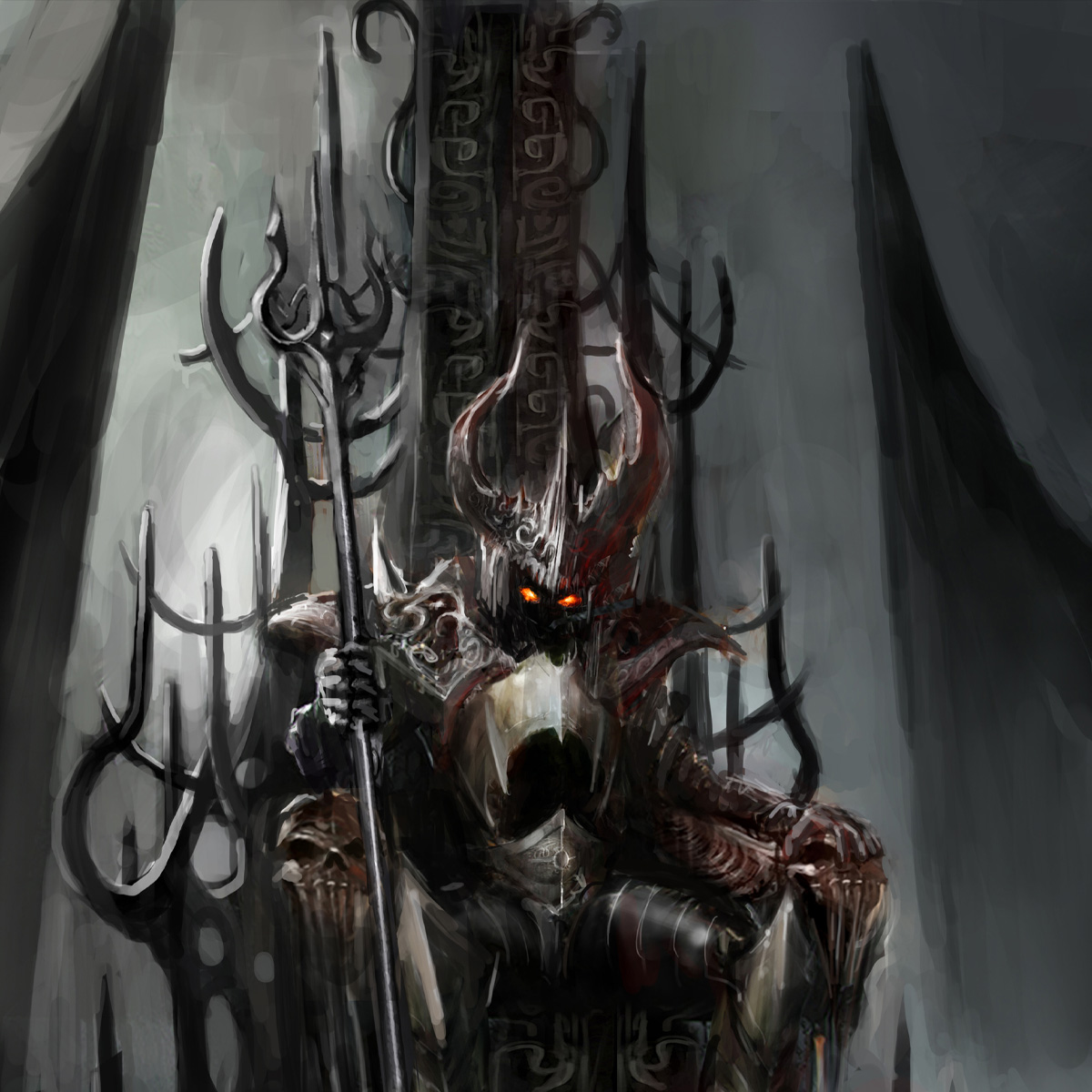
Villains are essential to any story-driven role-playing game, and understanding the different villain archetypes can help game masters create more engaging and dynamic adversaries. From the malicious mastermind to the powerful tyrant, each archetype presents a unique challenge for the players and can help drive the story in exciting and unexpected directions. In this blog post, we'll explore the various archetypes and motivations that make for memorable villains.
While there are countless more archetypes than we’ve included here, these are some of those most commonly found in gaming and literature. Feel free to read through or use the links below to jump to a specific archetype. And remember, there are countless motivations and ways to role-play any of these villains.
Corrupt Politician | Criminal Mastermind | Dark Wizard | Deviant | Evil Overlord | Lackey | Mad Scientist | Monster | Thrill-Seeker | Visionary
The Corrupt Politician
The corrupt politician is a familiar villainous archetype in urban or political tabletop role-playing games. These power-hungry characters are driven by ambition, manipulating and exploiting their position for personal gain. They often have little regard for the law or morality, believing that the ends always justify the means.

by Philippe de Champagne
Corrupt politicians can be found in all levels of government, from local politicians to heads of state. These characters are often portrayed as ruthless, calculating villains who use underhanded tactics to gain an advantage. They may form secret alliances with other villains or use bribes, blackmail, and other forms of coercion to achieve their goals.
Game masters can create a wide variety of different corrupt politician villains. Some may be noble and well-meaning but misguided in their actions. Others may be cold, calculating schemers who revel in their power and manipulation. Some may be driven by greed, while others may be more altruistic.
No matter their motivation, corrupt politicians are sure to make interesting and dynamic villains in any tabletop role-playing game. With a well-crafted corrupt politician, players will have their hands full in trying to expose them! Game masters should endeavor to avoid caricatures or stereotypes, instead developing unique characters with specific motivations, weaknesses, and allies.
Examples from literature: Cardinal Richelieu (The Three Musketeers), President Snow (The Hunger Games), Chancellor Sutter (V for Vendetta)
The Criminal Mastermind
The criminal mastermind is the quintessential villain, seeking to gain power, wealth, or some other form of benefit through criminal activity and complex schemes. They are often brilliant and calculated, using any means necessary to achieve their goals. They may be a solo operator, working on their own, or part of a larger criminal organization. The goal is usually to control or manipulate people, resources, and situations to accomplish their own ends with minimal risk to themselves.

by Sidney Paget
The criminal mastermind may operate in the open, working with a network of accomplices and carrying out their schemes through brute force and intimidation. They may also work in the shadows, conducting covert operations without anyone ever knowing. They often have extensive knowledge of the criminal underworld and its workings, using these connections to further their plans. In either case, they are usually well-prepared and have multiple contingencies in place if something doesn't go as planned.
In addition to the criminal mastermind’s need for control and power, they may also be driven by a personal agenda, such as revenge or competition, such as Sherlock Holmes' adversary Moriarty. Whatever the motivation, they will use any means necessary to achieve it, including bribery, blackmail, coercion, and murder.
In role-playing games, the criminal mastermind can make for a dangerous antagonist. By plotting complicated schemes, they can challenge players in ways other villains cannot. They can also make alliances and recruit followers to assist them in their endeavors. No matter how cunning or powerful the heroes may be, they often find themselves outmatched by a criminal mastermind. It can often be challenging for players to discover a criminal mastermind is truly behind all their troubles.
Examples from literature: Lex Luthor (DCU), Professor Moriarty (Sherlock Holmes), Tom Ripley (The Talented Mr. Ripley)
The Dark Wizard
The dark wizard is a fairly common archetype for villains in many tabletop role-playing games. As the name implies, these villains typically have a dark or malevolent agenda or are subservient to dark powers. Dark wizards are often the most potent adversaries players will encounter during their adventures, and they are often driven by an all-encompassing quest for knowledge or power.

by Nikolai Karazin
Dark wizards can take many forms, from evil necromancers to twisted mages or even ancient gods or cosmic entities. These villains typically have access to powerful spells, items, and artifacts, making them formidable opponents. They can also be quite crafty and use cunning tactics to outwit their foes.
Dark wizards tend to be driven to extreme goals, such as world domination or godhood. To achieve such ends, they may attempt to unearth ancient relics, gain control of powerful creatures, or even delve into terrible ancient magic to achieve their aims. Of course, they will also use all means necessary to eliminate anyone who stands in their way.
Players who choose to go up against a Dark Wizard can expect to face an extremely dangerous foe. Not only will they need to be creative and resourceful in approaching the situation, but they will also need to stay one step ahead of the villain’s schemes. If they can overcome these obstacles, they may be able to save the world from destruction.
Examples from literature: Baba Yaga (Slavic Folklore), Sauron (The Lord of the Rings), Voldemort (Harry Potter), Wicked Witch of the West (Wizard of Oz)
The Deviant
Villains come in many forms, but the deviant villain is particularly complex and brings a unique dynamic to the story. For game masters and players alike, deviant villains offer an exciting challenge and a chance to explore different character motivations. With their unpredictable behavior and hidden agendas, deviant villains can take your game or story to the next level.

by Tov Mauzer
The deviant is a villain that embodies the idea of breaking society’s rules. This villain may have started out as an upstanding citizen, only to go down a dark path. They are highly individualistic, with strong beliefs that defy the norms. They often have a personal mission to cause chaos, defy authority, or subvert the morally righteous, using their skills and resources to achieve selfish desires. When confronted, they often use manipulation and deception to appear as victims or innocent bystanders, making them difficult opponents to pin down.
Villains who deviate from the accepted norms of society have always been a source of fascination for us. We may not understand them, but it's clear that these villains commit acts of crime simply because they derive pleasure from it. They take perverse pleasure in carrying out acts that society finds abhorrent and often revel in the chaos and destruction they cause.
This archetype allows for a highly unpredictable and chaotic antagonist who is often morally bereft and willing to do whatever it takes to get their way. This type of villain can bring an extra layer of tension and suspense to any story, making them the perfect foe for any hero. Remember that, especially when it comes to deviant villains, their actions may cross certain lines that make your players uncomfortable.
Examples from literature: Hannibal Lecter (Red Dragon), Ramsay Bolton (Game of Thrones), The Joker (DCU)
The Evil Overlord
The Evil Overlord is one of the most iconic archetypal villains in tabletop role-playing games. As their title implies, these villains are tyrants who wield immense power and have grandiose ambitions for world domination. Their motivations can range from a lust for power to a desire for revenge or a need for control, but whatever the reason, their primary goal is usually the same - to rule with an iron fist.
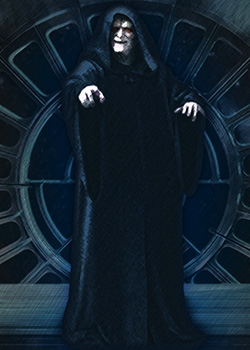
by Roger Soucy
The Evil Overlord’s most defining trait is their oppressive and cruel attitude toward those they consider lesser than them. They often view other people as mere pawns in their grand schemes and are willing to use whatever means necessary to get their way. This includes threats, manipulation, bribery, and even torture if necessary. These villains also tend to be paranoid and suspicious of others, believing everyone is out to get them or undermine their authority.
The Evil Overlord's behavior is not limited to their attitudes towards other people. These villains also have grandiose designs for the world they want to create, often involving rigid social structures and strict laws. They are willing to do whatever it takes to make their vision a reality, regardless of the cost or consequences.
The Evil Overlord may seem unstoppable, but they have a few weaknesses. Their paranoia and hubris can often lead them to make mistakes, which can be exploited by heroes brave enough to challenge them. In addition, the people closest to them may be able to sway them if they are convinced of a different course of action. With these tools at hand, heroes may be able to stand up to these powerful antagonists and save the day.
Examples from literature: Darkseid (DCU), Emperor Palpatine (Star Wars), White Witch (The Lion, The Witch, and the Wardrobe)
The Lackey
The lackey is often seen in many tabletop role-playing adventures but seldom as a primary antagonist. They are loyal servants to their evil masters and will do whatever it takes to ensure the success of their plans. Lackeys come in a variety of forms and may have different goals, but all have a common trait: they will always put the needs of their master before their own.

by Gabriel Cardozo
The lackey usually acts as the go-between for the villain and their minions, relaying orders and carrying out tasks. They may also serve as the face of the villain in certain situations, helping to carry out their plans without revealing the true mastermind. While the lackey may appear to be in charge, they still take orders from their true master.
At the heart of the lackey is their profound loyalty to their master. While other villains may be tempted to switch sides or betray their master for personal gain, the lackey will stay loyal no matter what. This unwavering loyalty is often seen as a strength but can also be a weakness if it leads to rash decisions or misguided loyalty.
The Lackey is integral to any villain’s entourage, serving as a confidante and henchman. While they may not be the most powerful or impressive villains, they are essential for any evil plan to succeed. They are the backbone of any criminal enterprise and deserve recognition for their dedication and loyalty.
Examples from literature: Count Rugen (The Princess Bride), R. M. Renfield (Braham Stoker’s Dracula), Ringwraiths (The Lord of the Rings)
The Mad Scientist
The Mad Scientist is one of the most iconic and entertaining archetypes of villainy, often found in comics and science-fiction tropes. This character is usually a genius-level mastermind who uses their intellect to outwit their adversaries. They are intelligent, resourceful, and usually have an agenda that puts them in direct opposition to the heroes’ goals.
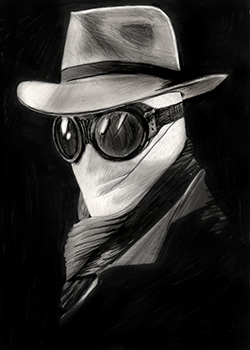
by NoRuLLa
Mad Scientists are constantly tinkering with technology and science to create new inventions or uncover secrets of the universe. They may be looking to unlock the secrets of immortality, control the weather, or even conquer the world! Whatever their ultimate goal, they generally show no regard for the safety of those around them and are often willing to experiment on living things for their own gains.
Mad Scientists can also be seen as sympathetic characters; they may have been driven to insanity by a tragedy or injustice in their past and seek revenge on the world. They may also be so focused on their work that they fail to recognize the danger that it poses or the consequences of their actions.
At their core, Mad Scientists are wildcards that can bring unexpected challenges and excitement to any game session. They force players to think outside the box to overcome their schemes and can often provide an interesting moral dilemma for players.
Examples from literature: Dr. Griffin (The Invisible Man), Doctor Moreau (The Island of Doctor Moreau), Victor Frankenstein (Frankenstein)
The Monster
When it comes to tabletop role-playing games, the archetype of the monster is one of the most popular villainous options. Monsters come in all shapes and sizes and can take on many different roles, from the classic evil dragon to endless zombie hordes. While their physical appearance varies wildly, monsters tend to have certain attitudes and motivations in common.
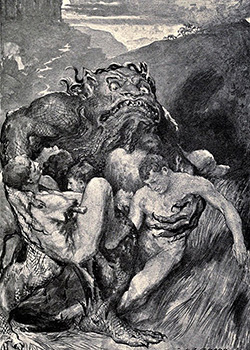
by John Henry Bacon
Monsters often desire to cause destruction due to a thirst for power, territory, or simply an appetite for chaos. They may also be motivated by vengeance, seeking revenge against those who have wronged them. Some are even motivated by greed, looking to acquire as much treasure and power as possible.
With their unique attitudes, motivations, and roles, monsters are an easy choice of antagonist for any tabletop adventure. No matter their motivations, monsters often play the role of the primary antagonist in an adventure, serving as the big bad or dungeon boss that the heroes must face and defeat. Less commonly, monsters can be used as campaign-level antagonists, but this usually requires an intelligent monster or a nearly unstoppable one.
Examples from literature: Dracula (Braham Stoker’s Dracula), Grendel (Beowulf), Smaug (The Hobbit)
The Thrill-Seeker
The thrill-seeker is a type of villain who loves the thrill and rush of committing crimes and wreaking havoc. They are usually driven by selfish motives and don't necessarily have any deep-seated vendetta or goal. Instead, they want to experience the thrill of the danger and the chaos they create.

by Rafa Arsen
These villains often take on various roles as they seek out more dangerous activities. Some may become pirates, while others might plan elaborate heists or seek out ever more dangerous foes. Whatever the job, these thrill-seekers tend to be reckless and impulsive, with little regard for the consequences of their actions.
These villains are often highly charismatic, making them effective at manipulating and recruiting those who are willing to follow their lead. However, they are often very short-sighted and don’t always think through the potential consequences of their actions.
The thrill-seeker is a unique archetype among tabletop villains because they often don't have a genuinely evil agenda or lust for power. As such, they can make for great recurring antagonists for any role-playing game, as their reckless behavior can cause a great deal of havoc and disruption. Plus, it allows players to test their wits against a villain with no grand scheme or overarching goal.
Examples from literature and movies: Bodie (Point Break), Catwoman (DCU), Harley Quinn (DCU), Lestat (Interview with a Vampire), The Predator (Predator)
The Visionary
The visionary archetype is a fascinating villain but can also be used as a motivation for the archetypes above. These characters have grand plans with far-reaching implications, often affecting many different people and organizations. They'll stop at nothing to reach their objectives, often using complicated schemes and intrigue. They're extremely dangerous and intriguing antagonists.

by James Zapata
Visionary villains come in all shapes and sizes, from the ruthless dictator to the misguided idealist. Whether they are conquering “evil” nations, manipulating public opinion, or using religion as a tool for control—these characters are determined to make their vision of a better world a reality. A common goal drives them: to create a better world, even if their version of “better” doesn’t match that of society as a whole.
One of the most dangerous aspects of the visionary is that they are often not seen as villains. To their followers, they are the savior, the hero, or even the divine messenger. They excel at building a large following of believers through promises of power, absolution, or other grand rewards. Ultimately, their promises may be lies or manipulation, or they may genuinely believe their own vision, but the effect is the same.
As a game master, you can use this archetype to create powerful and memorable villains to face off against your players. They're world-shaking antagonists that can keep you busy for years! These villains can often turn entire countries against the players, demonizing the players and making them seem like the bad guys, and are often the basis for extended campaigns.
Examples from literature: Fëanor (The Silmarillion), Poison Ivy (DCU), Ra’s al-Ghul (DCU), Thanos (Marvel), Thulsa Doom (Conan), Tyler Durden (Fight Club)
In Conclusion
When creating memorable villains in tabletop role-playing games, the archetypes discussed above provide a great starting point for game masters. By giving your villain a clearly defined purpose and personality, it will be easier to make them an integral part of the story. Furthermore, exploring the various character traits associated with these archetypes can help you create a more nuanced and dynamic villain who is sure to challenge your players. Regardless of the archetypes you choose, ensure that your villain has plenty of depth and motivation. With careful planning and thoughtful characterization, your villain will be sure to make a memorable impression.
Want to continue the conversation? Join Our Discord


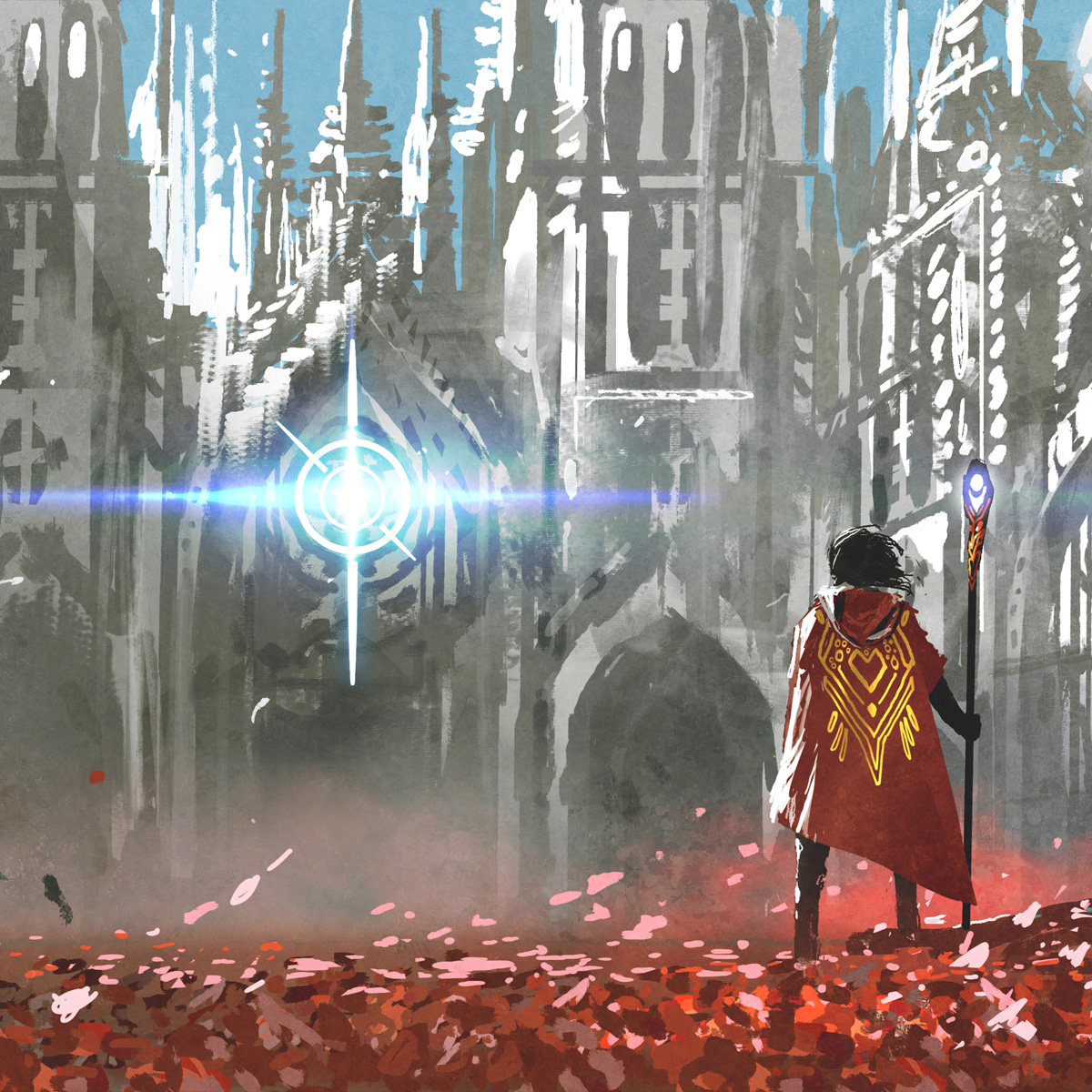
Commenting has been disabled for this post.